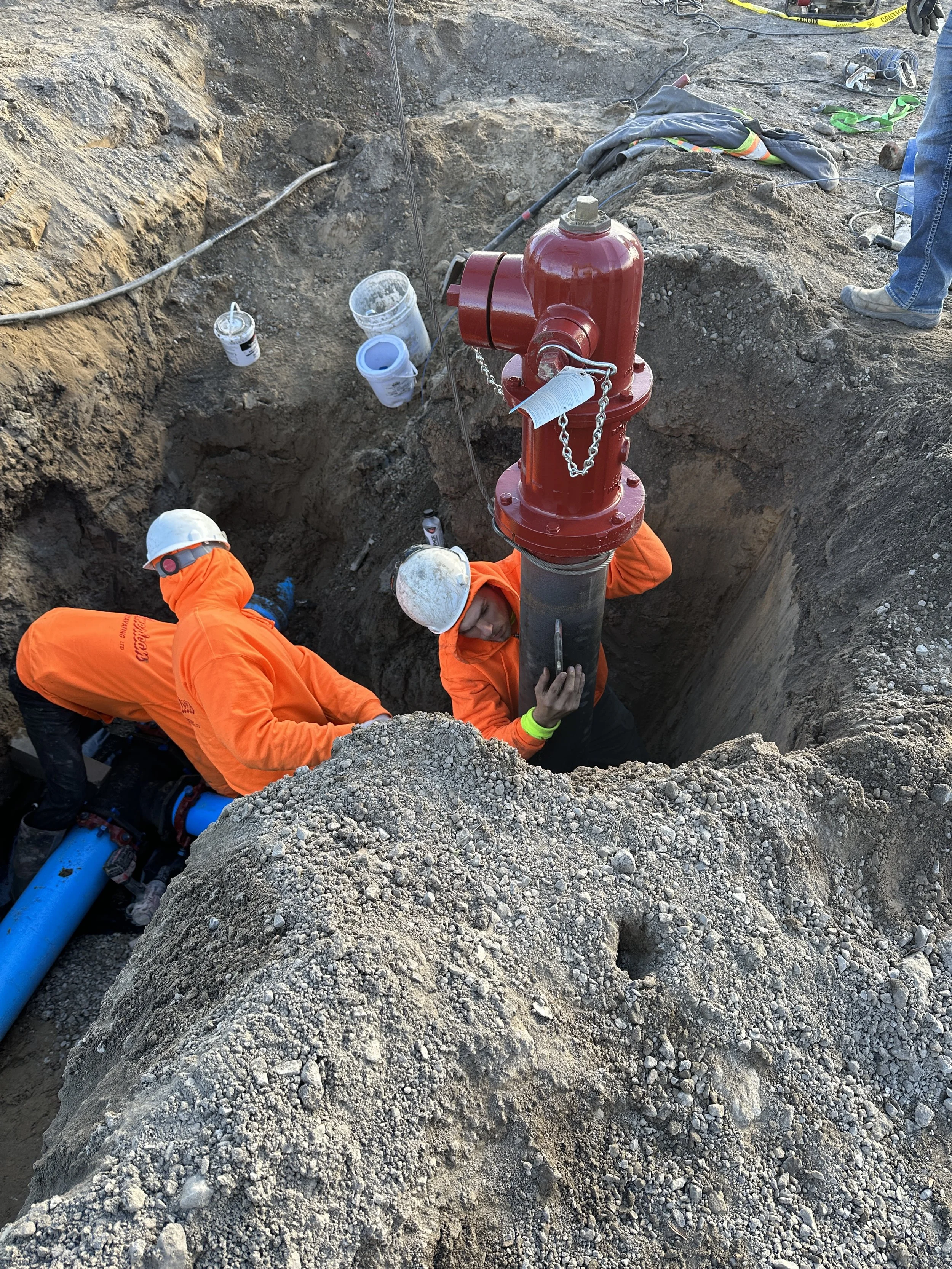Linwood Connects to Bay County Drinking Water System to Provide Safe, Clean Drinking Water to Their Customers
LINWOOD, MICHIGAN - The small unincorporated community of Linwood, Michigan, nestled along the Saginaw Bay, is sandwiched between Fraser Township and Kawkawlin Township in Bay County. For decades, the community has received clean drinking water from the Linwood Metro Water District (LMWD), which was founded in 1950. The district delivers clean drinking water, a cornerstone of public health, to more than 1,200 customers, including businesses and residents around the Linwood Community. The LMWD’s water system consists of approximately seven miles of water distribution main, valves, hydrants, and service connections.
When the district was incorporated, the LMWD began treating and distributing water on its own after constructing a small water treatment plant in 1952 that utilized diatomaceous earth filters to produce drinkable water. The LMWD purchased raw water to treat from the Saginaw-Midland Municipal Water Supply Corporation (SMMWSC), a public water supply entity that provides raw Lake Huron water to mid-Michigan municipalities.
The original LMWD water treatment plant was located at the corner of M-13 and Linwood Road. As it aged, issues began to present themselves, prompting the LMWD to construct a new water treatment plant.
In 1995, the LMWD constructed a new microfiltration water treatment plant, a 125,000-gallon elevated water storage tank, and made improvements to their water distribution system. The new water treatment plant and elevated water storage tank were built on Benjamin and Elevator Road in the center of the water district. The LMWD continued to purchase raw water from the SMMWSC and treated it with a new microfiltration plant using four filtration skids and chlorination before distributing it to their customers.
By the beginning of 2023, however, the microfiltration water treatment plant had been in operation for more than two decades, and many of the components began to reach their the end of their useful life. While the filters had been replaced in the years since the plant opened, age, use, and time had taken their toll on the infrastructure of the plant, and extensive improvements were needed to continue its vital service.
At the same time, the plant’s operator was also preparing to retire after decades of service. To keep the plant in operation, the district would have had to undertake the endeavor of searching for an employee with the proper licensure to operate the plant and take on the task of training the individual to understand the Linwood system.
With the knowledge that time was against them and the aging infrastructure of the water treatment plant, LMWD hired Spicer Group to assist with designing an economical and sustainable solution to continue providing clean drinking water to their customers.
Spicer Group evaluated and presented the LMWD with several alternative solutions, including performing necessary capital improvements to the existing water treatment plant and hiring licensed and trained staff, which would have cost tens of millions of dollars.
A more viable option was for the LMWD to purchase treated water from the Bay Area Water System, which services the communities surrounding Linwood with drinking water. LMWD could tie into the Bay County system, which had expanded since the LMWD was formed. This option was the most practical, as it would allow them to abandon the water treatment facilities.
Spicer Group was hired by the LMWD to design an improvement project that would connect the district to the Bay Area Water System at the most cost-effective location—the intersection of Elevator Road and LeBourdais Road, south of the existing Linwood Water Treatment Plant.
This project included the installation of more than 3,100 feet of 8-inch PVC water main and a pressure-reducing valve. The Bay Area Water System operates at a higher pressure than the Linwood System was accustomed to, and the 125,000-gallon elevated water storage tank was not designed for these higher pressures. The pressure-reducing valve prevented the water tower from continually overflowing and allowed the system to have the reliability of having the water tower remain in service with control to ensure the turnover of water within the tank and the ability to adjust the levels of the water tank given the required demand or the time of year.



